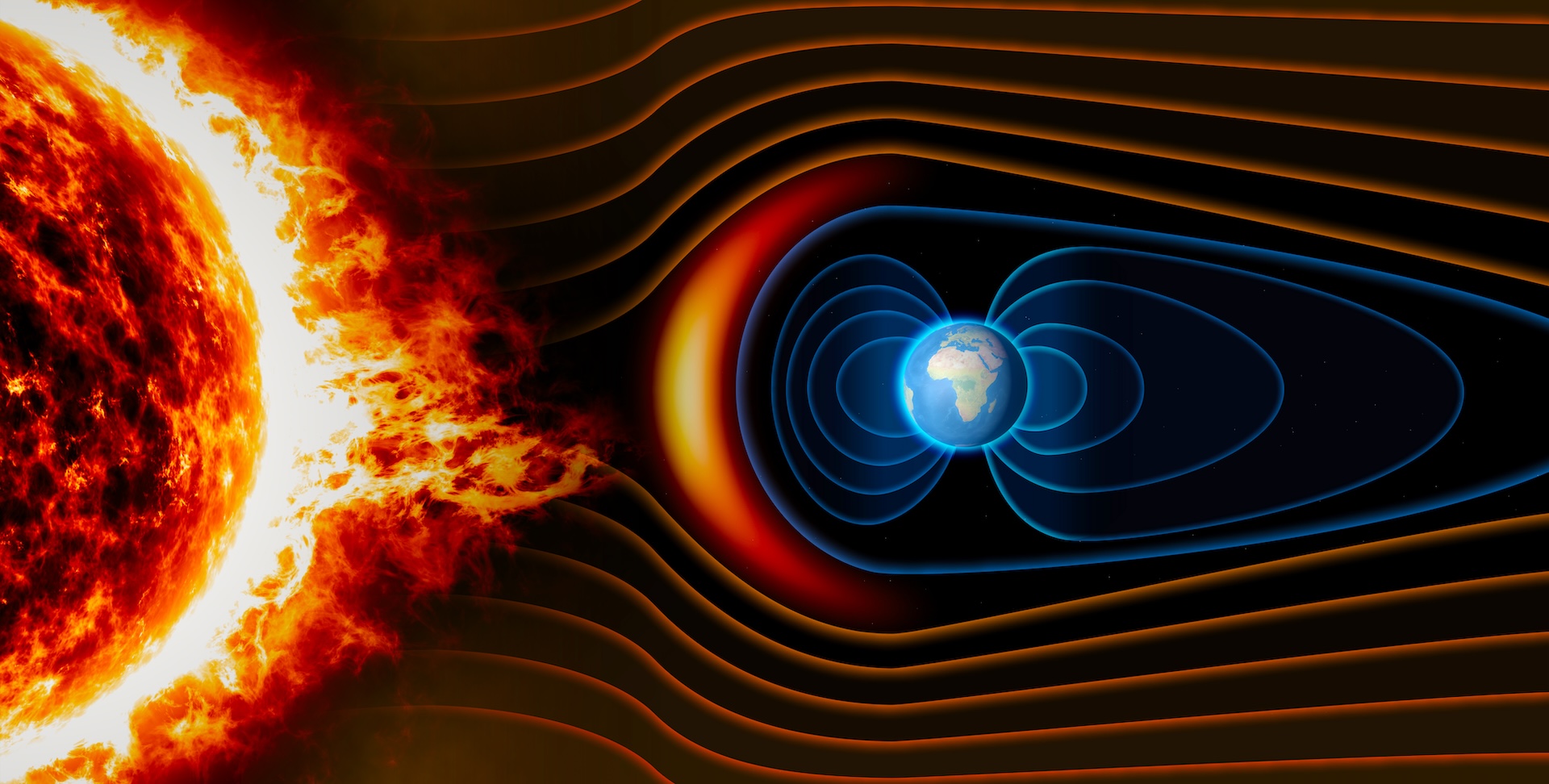
A near collapse of Earth's magnetic field may have paved the way for life to evolve past the microscopic stage.
New research on ancient rocks from South Africa and Brazil suggests that Earth's magnetic field underwent a major weakening about 591 million years ago. This corresponds to a time period called the Ediacaran (about 635 million to 541 million years ago), when both the atmosphere and the oceans may have become more oxygen-rich and living things evolved to be larger and more mobile than previous life-forms. The new findings suggest that the weakening of the magnetic field enabled this oxygen boost, which, in turn, led to a new phase of evolution.
"If we're right, this is a pretty profound event in evolution," study leader John Tarduno, a planetary scientist at the University of Rochester in New York, told Live Science.
The findings could have implications for how life might arise on other planets, Tarduno added, and highlights the way that the geology of the deep Earth influences the atmosphere and surface.
Earth's magnetic field is driven by the movements of the planet's iron-rich core. Today, the field owes its strength to the churn of the outer liquid core, which is driven by heat released from the solid inner core as it crystallizes at the rate of about a millimeter per year.
Related: What if Earth's magnetic field disappeared?
Before the inner core solidified, though, Earth already had a magnetic field, which was driven by the churn of the entirely liquid core releasing heat to the mantle, or middle layer. Over time, as the core cooled and the temperature difference between the mantle and the core shrank, this heat release became less and less efficient, reducing the churn and thus weakening the magnetic field.

The new study, published May 2 in the journal Communications Earth & Environment, suggests that this weakening reached its most serious 591 million years ago, when it was 30 times weaker than it is today, the researchers found. They determined this by studying tiny crystals in rocks formed just below Earth's surface. The rocks and crystals cool over tens of thousands to hundreds of thousands of years, capturing an average picture of the magnetic-field strength over that time period.
In rocks just over 2 billion years old, the magnetic field was about as strong as it is today. This suggests that the heat transfer from the liquid core started to wane around the Ediacaran, Tarduno said.
"By the time we get to the Ediacaran, the field is sort of on its last legs; it's dying," he said.
At some point, the magnetic field may have disappeared altogether, he said. But then, the new driver of the magnetic field kicked up as the core started to crystallize, saving the field.
The approximately 26 million years of weak field strength overlaps with the Ediacaran oxygenation, and that may be no coincidence, Tarduno said. The magnetic field wraps around Earth like a protective blanket, but at the North and South poles, the field lines head straight off into space. When the field is weak, this open area around the poles expands. The gap allows hydrogen molecules to escape into space. Fewer hydrogen molecules mean fewer molecules for oxygen to bind to, translating into more free oxygen in the atmosphere and oceans.
This sudden supply of extra oxygen may have given organisms the opportunity to grow larger and become more mobile.
Earth may have gotten lucky with the timing. Had the field stayed weak for too long, Tarduno said, the exposure to unshielded space would have stripped away much of the planet's water.
"We need the Earth's magnetic field to preserve water on the planet," he said, "but it is sort of an interesting twist that during the Ediacaran, the really weak magnetic field may have helped accelerate evolution."







